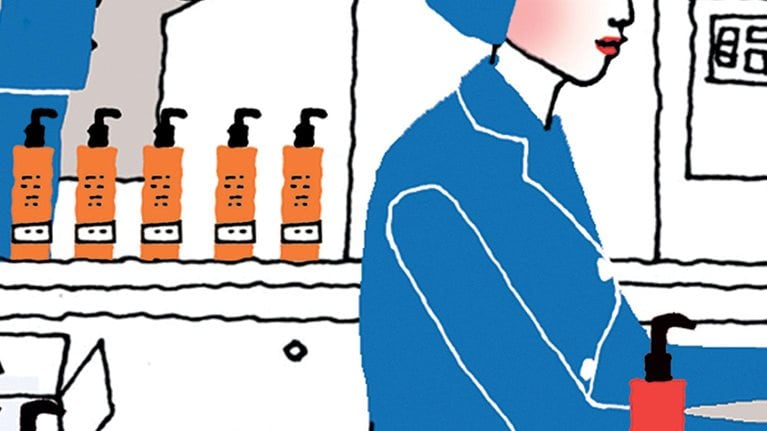A growing number of consumer-goods manufacturers and retailers are working together to improve their performance. Such collaboration—partnering on initiatives that extend beyond day-to-day business and that aim to deliver significant long-term value for both parties—is a welcome alternative to price-driven (and at times antagonistic) supplier-retailer relationships. In a 2012 survey of 140 companies, conducted by ECR Europe and McKinsey, all respondents said they collaborate in at least one area of their business; more than half said they collaborate in at least six areas.1
Traditionally, retailers and manufacturers’ collaborative efforts have focused on commercial areas such as in-store programs and merchandising. The survey indicates this is changing: recognizing that supply-chain performance will be critical to controlling costs and improving service in the coming years, survey participants ranked “supply-chain flows and processes” and “demand planning and fulfillment” as the two most important topics for future collaboration.
The rewards for supply-chain collaboration can be substantial. A recent study by the Grocery Manufacturers Association estimated the total opportunity (in cost savings and margin) for the US consumer sector at $10 billion; in Europe, which has a more fragmented consumer industry, the number would probably be even higher. The ECR−McKinsey survey respondents reported that successful collaboration, on average, resulted in a 4.4 percent decrease in out of stocks and a cost reduction of 5.4 percent (exhibit). The research firm Advantage, in its 2013 review of retailer-manufacturer collaboration in the US market, found that the most collaborative companies increased revenues by 3.7 percent more than the average company. The magnitude of these improvements is backed up by our analysis of more than 100 cases of successful supply-chain collaboration over the years.

We’ve found that some of the largest companies are among the most active collaborators, and increasingly these organizations are scaling up collaboration initiatives from small, local pilot projects to solutions that are deeply anchored in core processes. For instance, retailers such as Tesco and Wal-Mart have collaborated with suppliers to establish clear logistics standards. Market leaders, as well as midsize retailers like the German drugstore dm, are giving suppliers access to important data, such as SKU-level order forecasts. Some suppliers are working more closely with retailers to reduce out-of-stock rates (as Coca-Cola is doing) or to continuously refine delivery processes (as Unilever is doing). To improve planning, Nestlé piloted a new role—the customer-based coordinator, who works exclusively with a specific retailer—in its supply-chain teams in Spain and the United Kingdom and has since rolled it out across Europe.
Yet, despite the cost and effort invested by both parties, 40 percent of collaboration efforts fail to deliver sustained impact. One reason is that benefits still tend to be distributed inequitably: according to our survey respondents, retailers typically gain more from collaboration efforts (about 8 percent in cost reduction) than their manufacturing partners do (2 percent). Respondents further cite insufficient resources, lack of leadership support, and reluctance by one or both parties to share information as the primary reasons collaborations don’t last.

Read our latest thinking on manufacturer-retailer relationships
Based on the survey results and our industry experience, we have identified six steps that can make the difference between a productive collaboration and a frustrating one. (In any collaboration effort, parties should ensure they are in compliance with local laws and requirements.)
1. Collaborate in areas where you have solid footing. The most successful collaborations build on strengths rather than compensate for weaknesses. A manufacturer seeking to collaborate with a retailer in the hopes of improving its forecasting performance, for instance, will have little to gain from access to the retailer’s point-of-sale data unless it has the in-house analytical capabilities to make effective use of those data.
2. Agree on benefit-sharing models. Rather than shying away from seemingly unbalanced collaborations, companies can make them work by recognizing the potential imbalance, identifying the benefits of collaboration, and developing ways to share the benefits more fairly—for example, through discounts or price increases. Some companies have established joint benefit pools, using the savings to fund cost-reduction efforts or sales-improvement programs.
3. Select partners based on capabilities, strategic goals, and value potential. Many companies aim to collaborate with their largest suppliers or customers—but the largest partner may not be the best one. A smaller partner may invest more in a collaboration effort than a large partner who is already juggling similar efforts. A better approach is to assess potential partners across three dimensions. First, is there enough potential value in collaborating with this partner? Second, do both parties have sufficiently common strategic interests? Third, does the partner have the infrastructure and processes in place to provide a strong foundation for the collaboration?
4. Dedicate cross-functional resources and ensure senior-leadership involvement. A successful collaboration begins at the top, with a steering committee of senior leaders who not only set the defining vision for the effort, but also have the power to allocate the necessary resources to support it. A cross-functional team consisting of representatives from both organizations designs the initiative and carefully considers its operational implications. For example, the team for a demand-planning effort should include representatives from the manufacturer’s sales, finance, and supply-chain functions and the retailer’s purchasing, merchandising, and store-operations functions.
5. Jointly manage performance and measure impact. Both parties should use the same metrics and performance-management system. Selecting the right metrics inevitably involves trade-offs. For example, to reduce logistics costs, the partners may have to choose between a pallet configuration suited to a retailer’s restocking process, which will reduce in-store labor costs, and one optimized for truck fill, which will reduce transportation costs between the distribution center and the store. We recommend that partners select and track the smallest number of metrics required to provide a clear picture of the effort’s overall performance. Partners should schedule regular problem-solving sessions to address trade-offs.
6. Collaborate for the long term. The final ingredient for a successful collaboration is stamina. Through joint planning sessions and multiyear performance metrics, both parties must define long-term objectives and develop a road map for future collaborative initiatives, while being mindful of and capturing quick wins to gain momentum for the effort.
The payoff from collaborative efforts can be tremendous. Although successful collaboration is neither quick nor simple, it is certainly achievable—and definitely worthwhile.
Parts of this article are adapted from Luis Benavides, Verda De Eskinazis, and Daniel Swan, “Six steps to successful supply chain collaboration,” Supply Chain Quarterly, Quarter 2 2012, supplychainquarterly.com.


